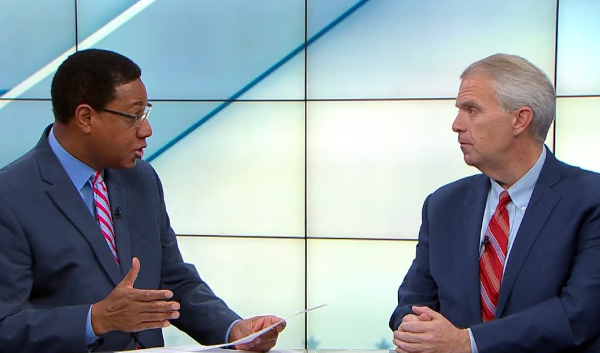As local television news navigates a rapidly shifting media landscape, industry veterans are sounding the alarm on the mounting challenges that threaten both the business model and the journalistic mission of local stations.
“We’re facing two forks in the road,” Jackson, Mississippi-based WJTV News Director Tai Takahashi said. “On one side, we have personnel challenges. On the other, industry-wide transformation.”
From staffing shortages to changing viewer habits, the terrain has grown more difficult to navigate. The explosion of streaming services has many local stations launching their own digital channels in a bid to retain audiences.
“Will people really watch news on those platforms like they do Netflix? We don’t know. But we have to try because that’s where everything seems to be going,” Takahashi said.
Beyond format changes, Takahashi expressed concern about public trust. “You’ve got to understand that people distrust us,” he said. “You’ve got to prove them wrong every day.” The rise of misinformation and politicized narratives has only deepened skepticism, particularly when terms like “fake news” get tossed around indiscriminately.
Beyond streaming, younger audiences increasingly rely on apps like TikTok and Instagram for news. That shift presents both an opportunity and a dilemma for stations.
“You need to be on those platforms,” Takahashi advised, “but not at the expense of credibility.” Dancing for clicks or lip-syncing viral sounds might attract attention, but it risks undermining trust.
Local TV veterans in the Mississippi Association of Broadcasters also underscore the importance of returning to journalism’s core mission: reporting facts and holding power accountable. General Manager Chris Larum of WGBC in Meridian, Mississippi, says that’s often not possible with a short social media clip.
“You’re not gonna have the whole story. So, if you’re gonna present a piece of story, then you need to push back and say, ‘For more on this story, watch us at this time, go back to my web page, read the entire story, see the entire interview, or whatever it may be,” Larum said.
Despite all of the delivery system changes, ratings systems like Nielsen and ComScore still dominate how station performance is evaluated, but professionals are increasingly skeptical. “Both are flawed. Both are estimates. And yet, decisions are made based on that data,” said Larum. The over-reliance on ratings can distort editorial judgment, leading journalists to produce content designed to spike numbers rather than inform the public.
“If you’re doing news just to hit a number, you’re missing the point,” said Larum. “Focus on meaningful content, and the audience will come.”
For those entering the industry, the advice was clear: stay grounded in the principles of journalism, be flexible with platforms, and understand the business side without being consumed by it.








